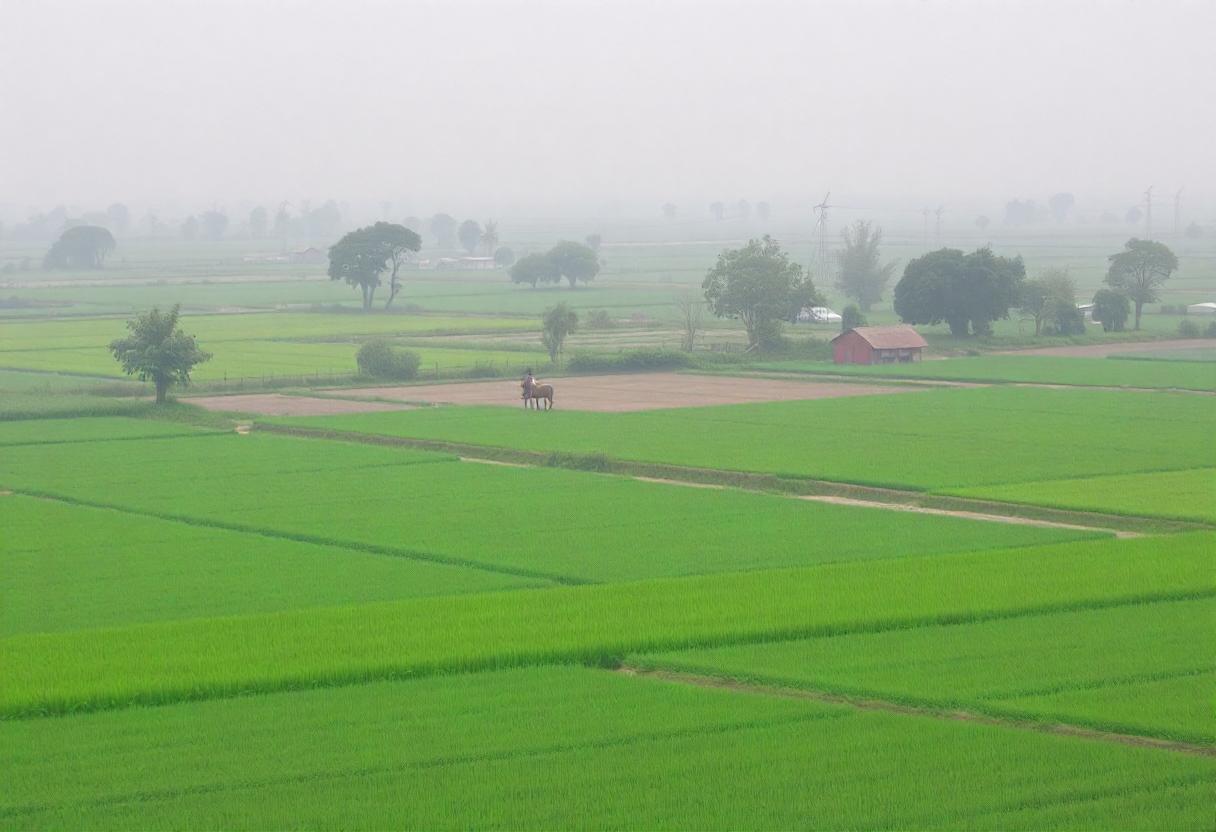
India, with its vast geographical expanse, varied climate, and rich natural resources, has multiple agriculture zones that support a diverse range of crops. The country’s agricultural zoning is driven by factors like climate, soil type, rainfall, and topography, enabling farmers to cultivate crops suited to specific regional conditions. These agriculture zones help optimize production and ensure sustainable farming practices across the country.
Climate Zones in Indian Agriculture
India has six primary climate zones that influence agricultural practices:
- Tropical Wet and Dry (Savanna) Zone: This zone is characterized by high temperatures and alternating wet and dry seasons. Found in central and southern parts of India, crops such as rice, millet, sorghum, and pulses thrive in this climate due to the seasonal monsoon rains.
- Humid Subtropical Zone: Covering parts of northern and northeastern India, this zone experiences hot summers, cool winters, and ample rainfall during the monsoon season. Rice, wheat, sugarcane, and tea are widely grown in this region, particularly in areas with fertile soils.
- Tropical Wet Zone: Found in coastal regions like Kerala and the Western Ghats, the tropical wet zone is known for heavy rainfall and humid conditions year-round. This makes it ideal for crops like rubber, tea, coffee, and spices, which require consistent moisture.
- Arid and Semi-Arid Zone: Covering parts of Rajasthan, Gujarat, and Karnataka, this zone has low rainfall and high temperatures. Crops that require less water, such as millet, barley, and pulses, are well-suited to this region. Innovative irrigation methods are often employed to supplement natural rainfall.
- Mountain Zone: The mountainous regions of the Himalayas experience a cooler climate with a short growing season. The unique microclimate of these areas allows for the cultivation of crops like apples, barley, and maize, along with some niche crops like saffron and medicinal herbs.
- Temperate Zone: In the northern states like Jammu and Kashmir and Himachal Pradesh, the temperate zone supports the cultivation of fruits like apples, peaches, and plums, as well as grains like barley and oats.
Soil Zones in Indian Agriculture
India’s diverse soil types have led to distinct soil zones, each supporting different crops based on the nutrient content and water retention capacity of the soil:
- Alluvial Soil Zone: The northern plains of India, especially in states like Punjab, Uttar Pradesh, and Bihar, are dominated by alluvial soils. These fertile soils, rich in nutrients, are ideal for crops like rice, wheat, sugarcane, and pulses.
- Black Soil Zone: Found primarily in Maharashtra, Madhya Pradesh, and parts of Gujarat, black soils (also known as regur soils) are highly suitable for cotton cultivation due to their moisture-retentive properties. Other crops such as sorghum, maize, and sunflower are also grown in this zone.
- Red Soil Zone: Southern and eastern India, including states like Tamil Nadu, Karnataka, and Odisha, are characterized by red soils. These soils, which are low in organic matter, support crops like groundnuts, millets, and pulses. With the application of proper fertilizers, rice and sugarcane can also be grown in this zone.
- Laterite Soil Zone: Laterite soils are found in areas with high rainfall, such as the western coastal plains and parts of Karnataka and Kerala. These soils are suitable for the cultivation of plantation crops like tea, coffee, rubber, and cashew nuts.
- Desert Soil Zone: The desert regions of Rajasthan and Gujarat have sandy soils with low water retention capacity. Crops like millet, pulses, and oilseeds are grown here, with irrigation playing a crucial role in overcoming the limitations of the soil.
Topographic Zones in Indian Agriculture
India’s topography plays a significant role in its agricultural zoning:
- Plains and River Valleys: The fertile plains of the Ganges, Brahmaputra, and Indus rivers form a crucial agricultural zone. These regions, with abundant water supply and flat terrain, are ideal for growing staple crops like rice, wheat, and sugarcane.
- Hilly and Mountainous Regions: The northern and northeastern parts of India, including the Himalayas and the Western Ghats, have terraced farming systems to make use of the slopes. These areas are suitable for the cultivation of tea, coffee, fruits, and vegetables that thrive in cooler climates.
- Plateaus: The Deccan Plateau, covering parts of Maharashtra, Andhra Pradesh, and Karnataka, is an important agricultural zone, especially for dryland farming. Millets, pulses, oilseeds, and cotton are grown here, with the plateau’s flat terrain facilitating mechanized farming in some areas.
Rainfall Zones and Agricultural Patterns
Rainfall is a critical factor influencing agriculture in India, and the country’s agriculture zones are often classified based on rainfall patterns:
- High Rainfall Zone: Regions receiving more than 200 cm of rainfall annually, such as the northeastern states and parts of Kerala and Karnataka, support water-intensive crops like rice, tea, and spices.
- Moderate Rainfall Zone: Areas receiving 100–200 cm of rainfall, such as the northern plains and parts of the western coast, are suitable for a wide range of crops including wheat, rice, pulses, and sugarcane.
- Low Rainfall Zone: Regions receiving less than 100 cm of rainfall annually, like Rajasthan, parts of Gujarat, and the Deccan Plateau, focus on drought-resistant crops like millet, gram, and oilseeds. Irrigation is vital in these areas to sustain agriculture.
Role of Agriculture Zones in India’s Food Security
The concept of agriculture zones is integral to India’s food security, helping farmers maximize crop yield and sustainability. By understanding the unique characteristics of each zone, Indian farmers can choose crops and agricultural practices best suited to their local environment. Additionally, the Indian government and agricultural research institutions provide zone-specific guidance to improve productivity and combat challenges like soil degradation, water scarcity, and climate change. These efforts contribute to India’s agricultural resilience and food production capabilities.